Raising Stonehenge
Raising Stonehenge would be an engineering challenge today. How did the Bronze-Age workers achieve this gargantuan task.
In the 1990s, experimental archaeology underwent something of a renaissance.
40 years on from the work of Richard Atkinson, a new project attempted to shed light on how the biggest stones of all had been stood on end to create the five giant trilithons.
Julian Richards, together with engineer Mark Whitby, had been given the task of finding how Stonehenge was built.
Experimental Archaeology
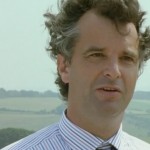
Julian Richards “For me, this has been one of those projects which the nearer you got to it the more difficult it became. Or, the more frightening it became. The reality of taking two 40-ton stones and turning them on their ends without using any machine power whatsoever is quite a daunting task. I don’t think people have really stopped to think about the problem of Stonehenge in a realistic way. All the theories are put together by people who haven’t actually been faced with the practical task of doing it.”
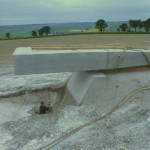
The first step in moving the giant concrete replica upright was to dig a huge pit beneath the stone. That just left the problem of levering it into the hole.
There’s no evidence that the Stonehenge area had hordes of people available to build monuments. So Mark Whitby’s method uses as few people as possible. He has an ingenious plan to tip the 40-ton stone as if it were a seesaw.
Mark Whitby
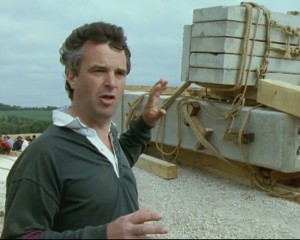
Mark Whitby “The basic concept is we’ve put six tons now on the back of the stone, by dragging it up these ramps. When it travels a certain distance along, this stone is going to stop. However, before it reaches that point, it will have passed this magic point of the centre of gravity and we’ll be inducing the force which will make the whole stone start to turn. This is a real point sort of crisis for us, in a way. I have never done it before, I don’t know anybody who has done this before, so we are in the experimental stages.”
Mark Whitby “Tt’s dropped just as we planned it to drop. And the only thing which is slightly different is it’s kicked out the back here. But that’s… That’s just better than we expected. That means it’s more upright and we’re a step closer to raising Stonehenge.”
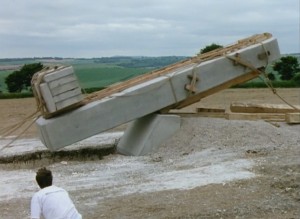
Team member “I think it’s probably one of the most spectacular ways one can think of getting a stone this size into a stone hole. I’ve heard comments that it was perhaps an over engineered approach. I’m not convinced about that. I mean, the people who built Stonehenge were very sophisticated, and were obviously capable of thinking out grand schemes like that and carrying them through. And I don’t see why, especially after you’d perhaps had a go with some smaller stones, that somebody wouldn’t have come up with an idea like this. Let’s use the weight of some smaller stones to help us move a bigger one. So, I don’t find it completely implausible.”
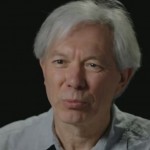
Mike Pitts “What’s interesting with experiments at Stonehenge is that almost all of them have been done for television. So we get this great visual spectacle and a wide public thinks about how Stonehenge was built. But the funny thing is that archaeologists themselves have not done these experiments. They haven’t been conducted scientifically and methodically and recorded in great detail and, you know, different ways of building Stonehenge compared logically and systematically with other ways. And so, what experiments we’ve had, haven’t actually told us that much. So, I think there’s great scope there for somebody out there now, to develop projects and systematically think about how Stonehenge was built, and to move on with our understanding of the monument.”
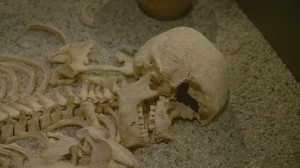
Experimental archaeology might have helped to paint a picture of how Neolithic man could have tackled such daunting challenges, but understanding how this feat of engineering was achieved by raising Stonehenge today doesn’t tell us much about the people who did it.
